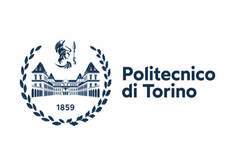|
5 videos available for this event!
|
Beyond Elasticity: Advances and Research Challenges
Au-delà de l’élasticité : avancées dans la recherche et prochains défis
16 – 20 May 2022
|
Scientific Committee
Comité scientifique Antonin Chambolle (CNRS, Université Paris Dauphine-PSL) |
Organizing Committee
Comité d’organisation Marco Bonacini (University of Trento) |
|
Technology has nowadays reached a paramount degree of complexity. In order to push the limits of today, we need a deep and solid understanding of the physical phenomena on which applications rely on. Formal computations or experimental observations alone can not fulfil the demand of knowledge required to unveil the mechanisms behind them. This can be only achieved when the language and the instruments of mathematical analysis are used to interpret experimental data and to predict the outcome of physical experiments.
In this conference we focus on challenges at the interface between mathematics and mechanics, such as the modeling of fine microstructures, the study of defects, the effects of randomness in textures and loading, dynamic fracture, inelasticity, as well as fast phase transformations for applications to new memory devices. It is therefore important to find a common ground to set up a dialogue between these disciplines. By gathering together international experts and young researchers, we aim at fostering the interaction between scientists of different areas, as well as exposing the new generations to the cutting-edge research on the topic. |
La technologie a atteint un extrême degré de complexité. Pour pousser ses limites on a besoin d’une connaissance profonde et solide des phénomènes physiques sur lesquels reposent les applications. Les computations formelles et les observations expérimentales ne suffisent pas à satisfaire la demande de connaissances nécessaires à comprendre leurs mécanismes ; il faut aussi interpréter des données expérimentales et prédire les résultats d’expériences physiques avec le langage et les outils de l’analyse mathématique.
Dans cette conférence on se concentre sur les défis qui surgissent au croisement entre la mathématique et la mécanique, comme la modélisation de microstructures fines, l’étude de défauts, les effets du hasard sur les textures et le chargement, la fracture dynamique, l’inélasticité et les transformations rapides de phase dans les applications pour les nouveaux dispositifs de mémoire. Il est important de trouver un terrain commun pour établir un dialogue interdisciplinaire : à travers cette réunion internationale d’experts et de jeunes chercheurs on voudrait encourager l’interaction entre scientifiques provenant de différentes branches tout en exposant les nouvelles générations aux recherches les plus innovantes dans ce domaine. |
Roberto Alessi (University of Pisa) How to update Griffith’s brittle fracture theory with the ability to describe fatigue cracks?
Stefano Almi (University of Naples Federico II) Brittle fracture in linearly elastic plates
Basile Audoly (École Polytechnique) Two-scale expansions in elasticity: application to dimension reduction and to periodic homogenization
Jean-François Babadjian (Université Paris-Saclay) On the convergence of critical points of the Ambrosio-Tortorelli functional
Blaise Bourdin (McMaster University) Fracture of heterogeneous materials
Marco Caroccia (Politecnico di Milano) A short-range interaction energy on Poisson Point Clouds
Vito Crismale (Sapienza University of Rome) Quasistatic evolution problems for models of geomaterials coupling plasticity and damage
Rita Ferreira (KAUST) Homogenization of integral energies subjected to differential constraints and associated with quasi-crystalline composites
Manuel Friedrich (FAU Erlangen-Nürnberg) Linearization of models with surface discontinuities
Thomas Hudson (University of Warwick) Elastic far-field developments around lattice defects
Flaviana Iurlano (CNRS – Sorbonne Université) Shape optimization of light structures and the vanishing mass conjecture
Carolin Kreisbeck (Catholic University Eichstätt-Ingostadt) Polycrystals and composites in single-slip crystal plasticity: The interplay of anisotropy and geometry
Stefan Krömer (The Czech Academy of Sciences) Injective elastic deformations via surface penalty terms
Martin Kruzik (The Czech Academy of Sciences) Nonlinear and linearized models in thermoviscoelasticity
Giuliano Lazzaroni (University of Florence) Dynamic solutions for a debonding problem in dimension two
Luca Lussardi (Politecnico di Torino) Soap films spanning elastic boundaries
Maria Giovanna Mora (University of Pavia) Explicit minimizers for a class of nonlocal interaction energies
Matteo Negri (University of Pavia) Homogenization of Griffith’s criterion for brittle laminates
Gianluca Orlando (Bari Polytechnic University) Frustration in a spin model: chirality transitions via a discrete-to-continuum variational analysis
Valerio Pagliari (TU Wien) Homogenization of elasto-plastic media
Riccardo Scala (University of Siena) A novel approach to topological singularities in R^2
Francesco Solombrino (University of Naples Federico II) Brittle membranes in finite elasticity
Ulisse Stefanelli (University of Vienna) A short-range interaction energy on Poisson Point Clouds
Marita Thomas (Weierstrass Institute) First-order formulation for dynamic phase-field fracture in visco-elastic materials
Elvira Zappale (Sapienza University of Rome) Periodic homogenization in the context of structured deformations
Barbara Zwicknagl (Humboldt University of Berlin) On variational models for needle-type microstructures in shape memory alloys




